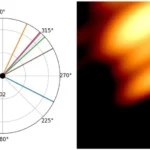Techoreon brings you a video that has shocked thousands on social media: this is what the Earth looks like in reverse, thanks to a video shared by astronaut Don Pettit from the International Space Station. Through his post on X, astronaut Don Pettit released a video in which he claims he managed to record the Earth “in reverse,” showing several of the planet’s wonders, such as a storm and the Northern Lights.
Changes in attitude, changes in latitude: @Space_Station We rotated 180 degrees and flew backwards for yesterday’s Soyuz docking. This is a bit long but keep watching for the surprise in the middle. pic.twitter.com/UDEp8zKDwE
— Don Pettit (@astro_Pettit) April 9, 2025Astronaut Don Pettit is currently on the International Space Station, where he can witness many of the planet’s wonders from space.
Pettit has become known for sharing various images and videos in which he shows people what the Earth and its wonders look like from space, one of the most popular being the Northern Lights.
The Earth spins “upside down”
This morning, April 11th, the astronaut announced that the station changed latitude, rotating 180 degrees, causing it to float upside down, giving the impression that the planet was doing the same.
Proof of this is the video uploaded by the astronaut, where you can see how the Earth goes in the opposite direction, revealing a faint light and lights in the distance, which are displaced by a large storm and then by a huge green aurora borealis.
In the clip, the Earth is seen in reverse, as if rewinding time. The camera records an entire day in seconds: thunderstorms, glowing green auroras, and the fleeting passage of the planet’s lights floating across the emptiness of space.
At the end of the aurora, the planet is plunged into darkness, implying that it has changed meridian, showing an entire day in seconds.
The astronaut asked people to be alert, as surprises will soon be revealed halfway to the Soyuz docking.
More images are expected to be released in the coming days, potentially revealing previously unseen details about what the Earth looks like in reverse from other angles in space.





